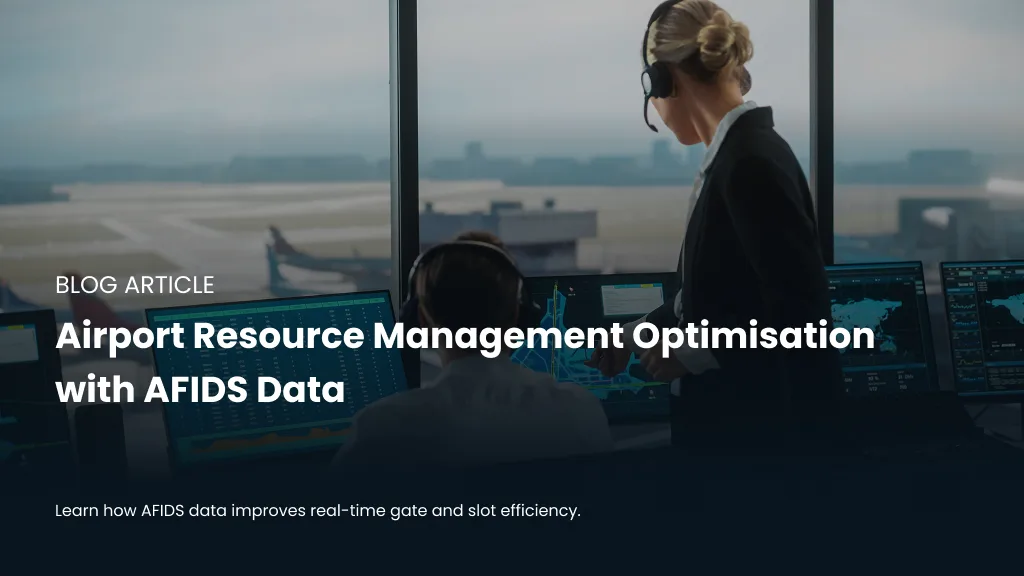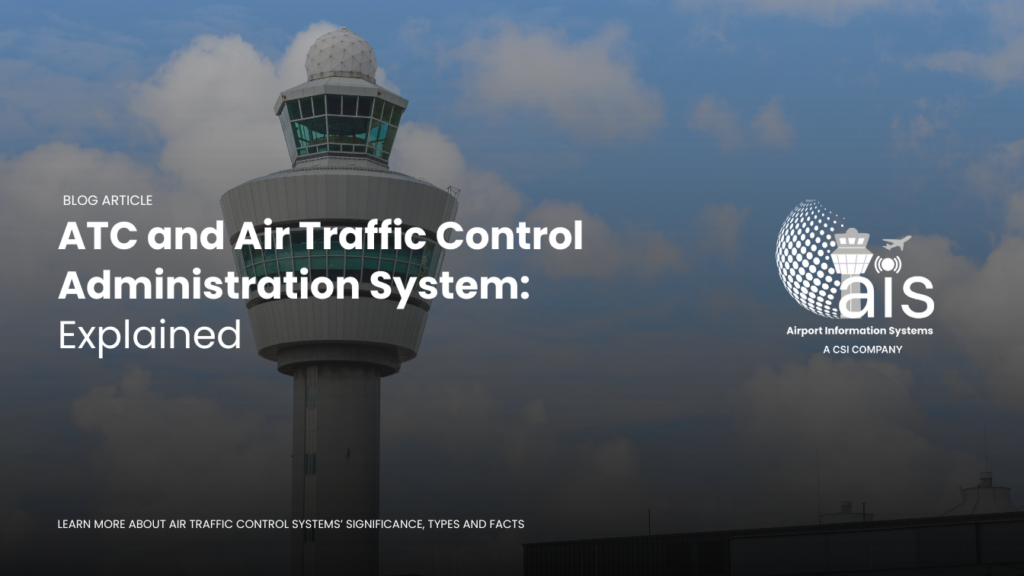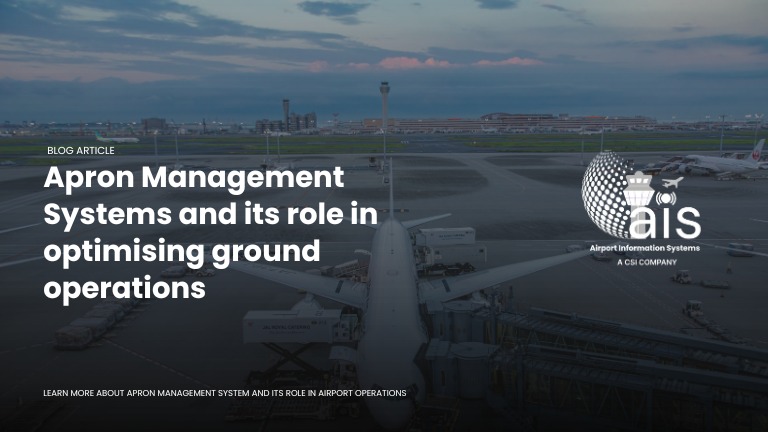A well-reputed global airport reported a major issue last month. Three flights arrived within minutes of each other, all requiring gates near Terminal 2’s central hub. Meanwhile, two delayed departures had passengers queuing at gates that should have been freed up an hour earlier. The knock-on effects rippled through the day: missed connections, frustrated travellers, and ground crews scrambling to reassign aircraft to available stands. Similarly, this scenario plays out daily at airports worldwide. The challenging job of coordinating slots, gates, and ground resources becomes increasingly complex as air traffic volumes return to pre-pandemic levels, making effective airport resource management optimisation more important than ever. Yet some airports are finding that the answer isn’t simply adding more infrastructure; it’s about making smarter decisions with the data they already collect.
The challenge isn’t a shortage of information or resources. Modern airports generate vast amounts of operational data every minute. Flight schedules, passenger flows, gate availability, ground equipment status, weather updates, and crew assignments all stream through various systems. The real problem lies in connecting these data points to make coordinated decisions that optimise the entire operation rather than individual components.
This is where the powerful Airport Flight Information Display System (AFIDS) comes in. While many see Airport Systems as just the screen showing flight times, for an expert, its data is the lifeblood of the entire operation. Let’s explore how leveraging AFIDS data goes far beyond public displays and provides the key to unlocking true efficiency in airport resource assignments.
The Challenge of The Dynamic Airport Environment
Airport resource management is like solving a high-stakes puzzle that constantly changes. Flights arrive early or late, weather systems shift, and mechanical issues pop up unexpectedly. These “irregular operations” can throw even the most perfectly planned schedule into chaos.
Traditionally, gate and slot assignments have relied on static schedules. A flight is assigned a gate weeks or months in advance, based on its planned arrival and departure times. However, this approach can’t keep up with real-time events. A gate might sit empty for an hour because an incoming flight is delayed, while another plane circles, waiting for a free spot. This inefficiency costs airports millions and harms the passenger experience.
The key challenges are:
Gate Congestion
A lack of available gates forces aircraft to wait on the apron, burning fuel and causing further delays.
Inefficient Slot Usage
When a flight doesn’t use its allocated runway slot, that capacity is wasted, limiting the number of total movements the airport can handle.
Poor Turnaround Times
Delays in getting to and from gates directly impact how quickly an aircraft can be serviced and prepared for its next flight.
High Operational Costs
Wasted fuel from waiting aircraft and increased staffing needs to manage disruptions all add to the airport’s bottom line.
To address these challenges, airport decision-makers need a more dynamic approach. They need to shift from static planning to a predictive, data-driven strategy that can anticipate and respond to change in real-time. This is where the rich data from the Airport Flight Information Display System comes into the picture.
Beyond the Public Display: The Power of AFIDS Data
At its core, an Airport Flight Information Display System is a data collection and processing hub. It’s the central nervous system that feeds information to the screens (FIDSnet) passengers see, but its true value lies in the data it manages behind the scenes.
AIS’s information display system, AFIDS, functions as the back-end to FIDSnet, gathering operational data in real-time to support management functions, aeronautical billing, and passenger information throughout the airport.
What kind of data does AFIDS provide?
The system doesn’t just show “on time” or “delayed.” It processes a wealth of real-time information, including:
Actual Arrival and Departure Times
Not just the scheduled times, but the exact moment a flight lands or takes off.
Gate and Terminal Changes
Real-time updates on which gate is assigned to a flight, including any last-minute adjustments.
Flight Status and Position
Data on whether a plane is in the air, on the ground, or preparing for pushback.
Baggage Claim Information
Details on which carousel is assigned to an arriving flight.
Aircraft Type and Operator
Specific details about the size and type of aircraft are crucial for assigning the right gate.
Moreover, this data, often integrated with other airport systems, like the Airport Operational Database (AODB) and various ground handling systems, forms a comprehensive, real-time picture of everything happening on the airfield and in the terminal.
Leveraging AFIDS Data for Airport Resource Management Optimisation
The data collected from several touchpoints throughout the airport becomes most powerful when it supports day-to-day operations, forming the foundation for effective airport resource management optimisation rather than merely displaying on passenger screens. By combining it with analytics and automation, airport teams can make faster, smarter choices about gate allocation and slot usage.
1. Real-Time Gate Assignment
Instead of a fixed schedule, gates can be assigned dynamically based on the current situation. When an incoming flight’s AFIDS data indicates that it has been delayed by two hours, the gate it was supposed to use can be freed up immediately for another arriving aircraft. This prevents the profligate scenario of an empty gate and a circling plane.
2. Predictive Slot Management
Advanced systems can use AFIDS data to predict future delays. If a flight departing from another airport is running late, the system knows that its arrival slot at your airport will be impacted. This allows for proactive adjustments, allotting the slot to a different, on-time flight and keeping traffic moving. The airport can maximise its capacity by filling every available slot.
A strong research-backed example of this approach comes from a study on Singapore Changi Airport. Researchers combined historical passenger data with machine learning models to forecast passenger flows, and then used these forecasts as inputs for an optimisation model to allocate slots more efficiently. The results showed that a traditional slot allocation approach would have disrupted over 2,000 passenger connections and added more than 30,000 hours of extra connection time. By contrast, the predictive optimisation model restored 52% of those disrupted connections and reduced 16% of total connection time, with only a 1% increase in schedule displacement.
This shows how predictive slot management, when paired with data-driven optimisation, can balance operational efficiency with passenger experience — ensuring airports not only maximise capacity but also minimise disruption at the individual traveller level.
3. Optimised Aircraft Turnaround
AFIDS data provides precise information on when an aircraft arrives at a gate and when it’s ready for pushback. This helps ground staff know exactly when to start the servicing process. It also helps with the sequencing of flights. By assigning flights to gates that minimise taxiing distances and time, airports can reduce fuel consumption and get planes back in the air faster. The efficiency gains here are significant and directly impact an airline’s bottom line.
4. The Power of A-CDM
Airport Collaborative Decision Making (A-CDM) is a concept that brings all airport stakeholders—airlines, ground handlers, air traffic control, and airport management—onto the same page. AFIDS data is a critical component of A-CDM. By sharing this real-time, accurate information, everyone can make better decisions, reducing delays and improving overall efficiency. For example, if a flight’s AFIDS data shows it’s leaving a gate early, the air traffic control tower knows to adjust its sequence for take-off, and the ground crew can be directed to the next arriving flight more quickly.
Real-World Benefits of Airport Resource Management Optimisation
The advantages of leveraging AFIDS data aren’t just theoretical. For airport decision-makers, they translate into tangible business benefits, the kind that define true airport resource management optimisation in practice.
Smarter Operations, Less Manual Work
By automating gate and slot assignments based on real-time data, airports can reduce manual workload and human error. This streamlines the entire operation, allowing airport ground crews to focus on more critical tasks.
More Flights Without New Infrastructure
As a result, a more efficient use of gates and slots means the airport can handle more flights per hour. For a congested airport, this is a direct path to increased revenue without building new infrastructure.
Fewer Delays, Better Punctuality
Proactive management of resources minimises the knock-on effect of delays. This is a huge win for airlines, which are measured on their punctuality, and for passengers, who want a smooth travel experience.
Lower Running Costs Across the Board
Savings come from practical changes such as cutting taxi time, reducing fuel consumption, and allocating staff more efficiently. An optimised system helps airports avoid unnecessary operational expenses.
A Smoother Journey for Travellers
When planes get to their gates faster and passengers receive accurate, up-to-the-minute information, they are less stressed and have a more positive experience. This enhances the airport’s reputation and makes it a more attractive hub.
Conclusion
Airport resource management optimisation is a complex, dynamic puzzle. Traditional methods rely on static schedules, are no longer fit for the modern, busy airport.
The key to solving this puzzle is data, specifically, the real-time, detailed data provided by an Airport Flight Information Display System (AFIDS). And with AIS’s AFIDS 2.0 Updates, you can efficiently, productively, and accurately navigate and even excel in this complex environment.
This data is more than just information for passengers; it’s the intelligence needed to make smart, responsive decisions. By using AFIDS data to power dynamic gate assignments, predictive slot management, and collaborative decision-making, airports can:
- Drastically reduce delays and improve on-time performance.
- Make better use of limited gates and runway slots.
- Lower operational costs and environmental impact.
- Enhance the overall experience for airlines and passengers.
In short, for any airport looking to build a more efficient, resilient, and profitable operation, the journey starts with truly understanding and leveraging the powerful data they already have at their fingertips.
Would you like to revolutionise your airport’s efficiency by unlocking real-time insights and smarter resource management with AFIDS?


